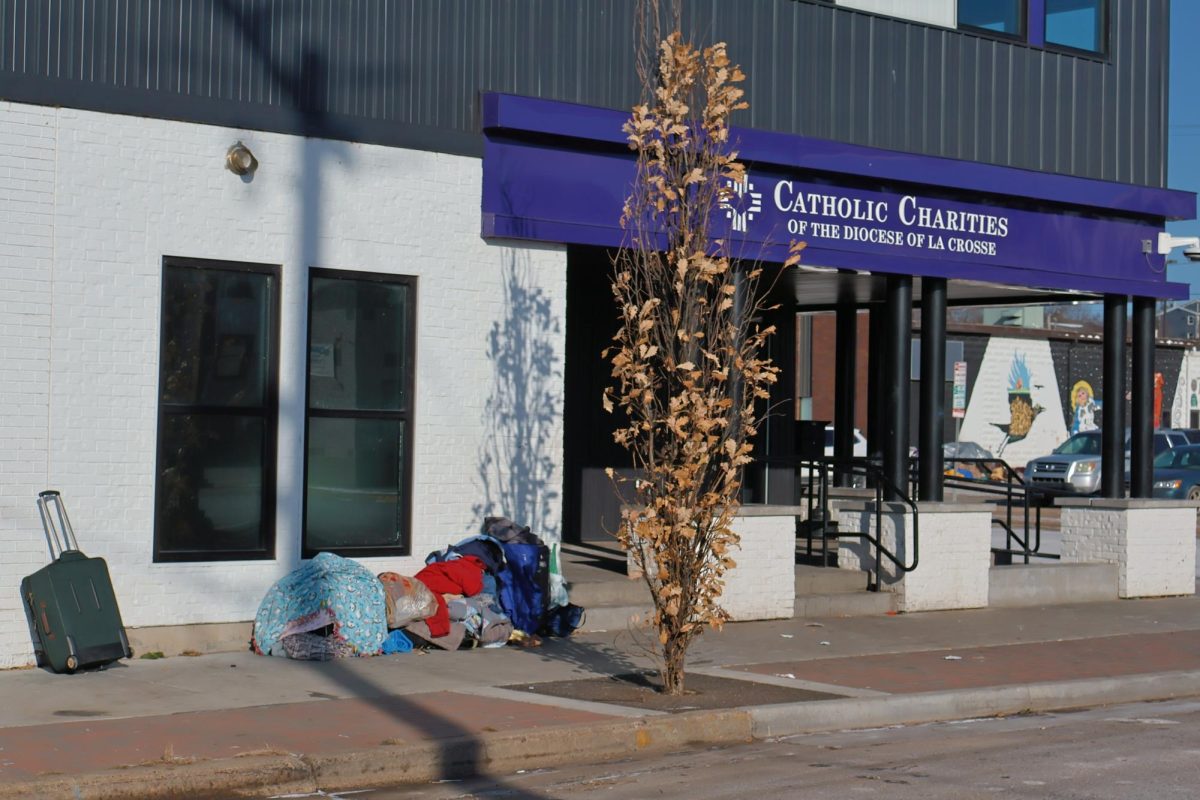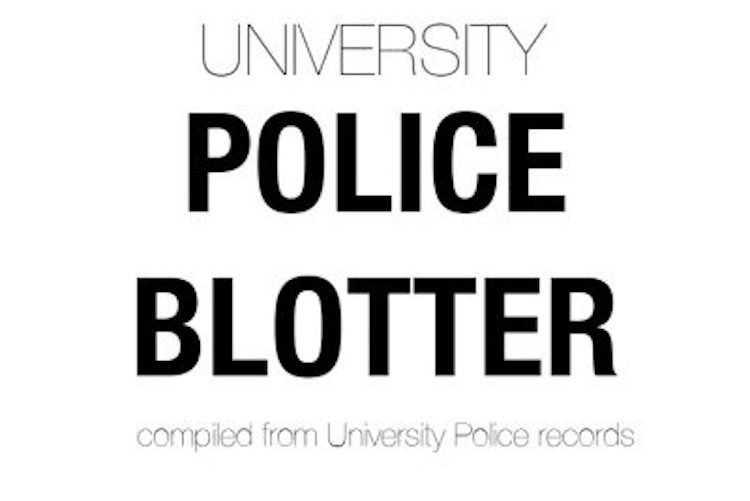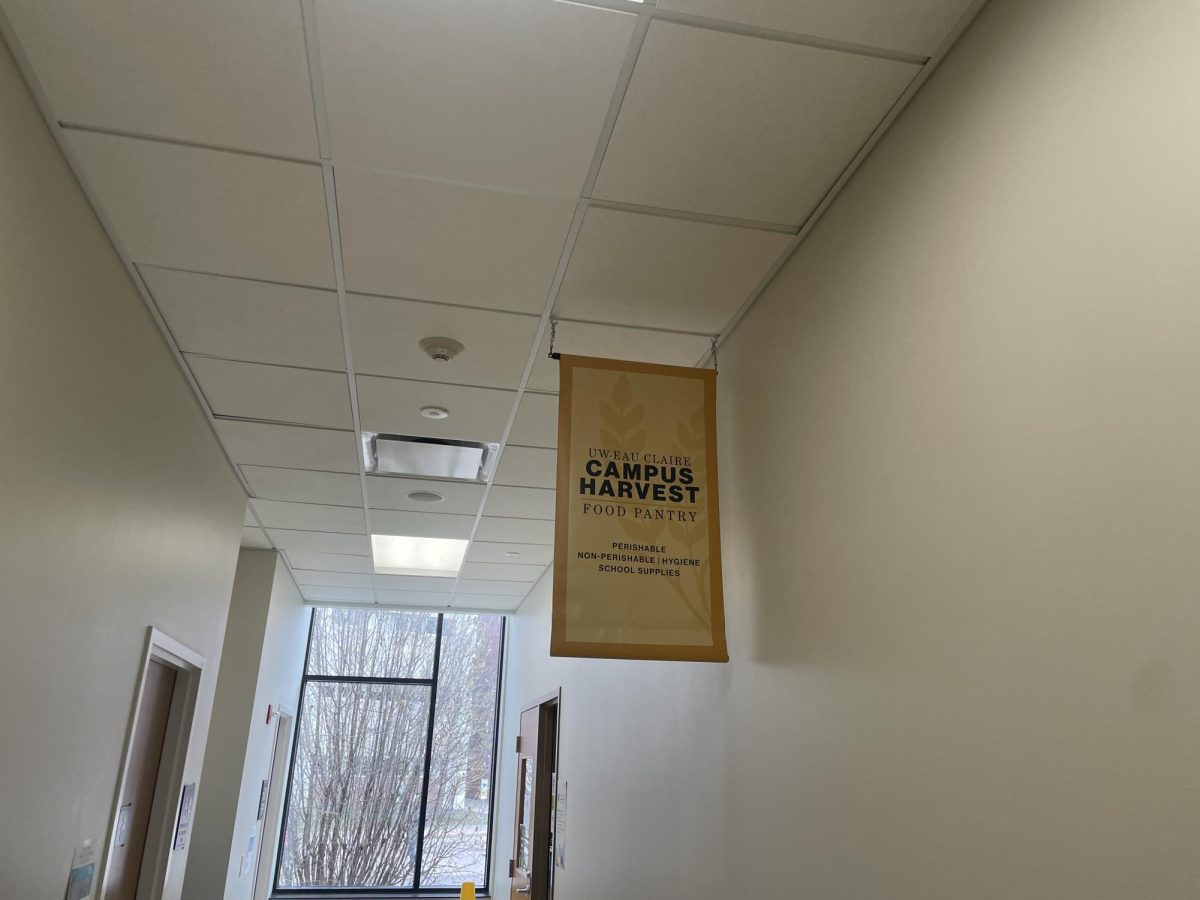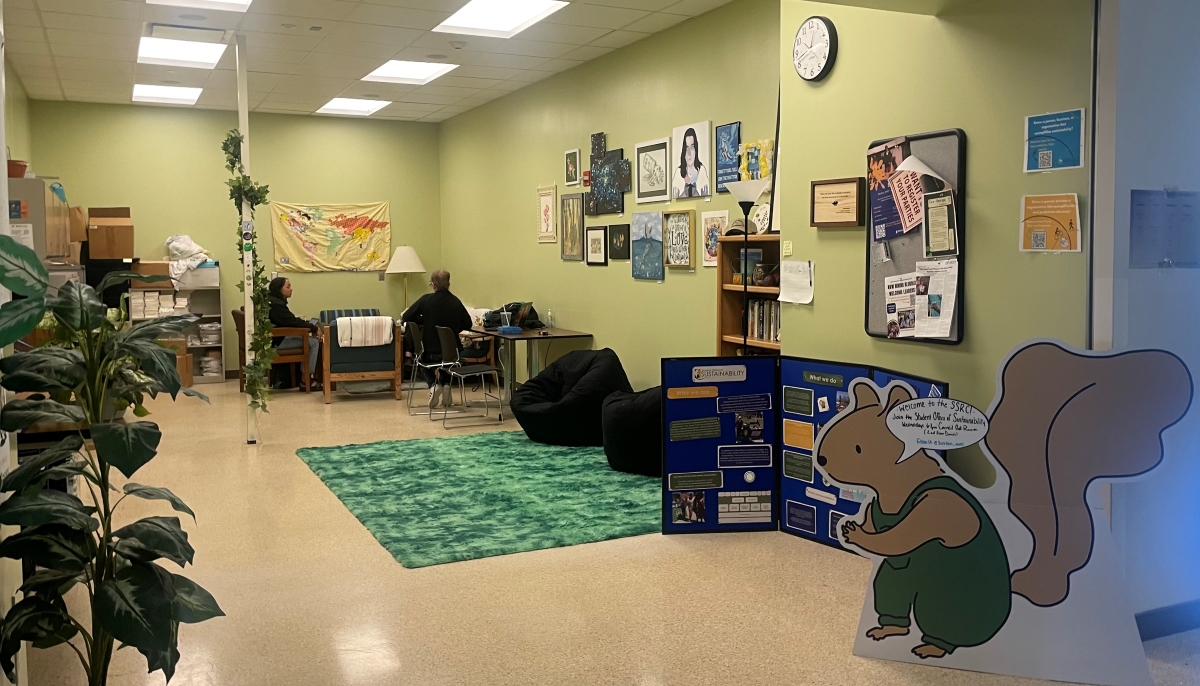There’s a small, open space across the road from Phillips Science Hall. It’s partially secluded, surrounded by trees, and quiet. And it’s no longer empty.
On a sunny morning last week, the Foodlums transferred two swarms of honeybees and their respective queens into two beehives stationed in that space across from Phillips.
Junior Ellen Sorenson, co-vice president of the Foodlums, was one of the students involved with assembling the beehives and installing the bees. She assisted geography professor Joe Hupy, who Sorenson said is UW-Eau Claire’s resident beekeeping expert.
The reason behind having bees, Sorenson said, was to help maintain a sustainable food system on campus and in the community.
“We asked ourselves: What can we do to help our sustainability? What can we do to make sure our fruits and vegetables will still be here?” she said. “And one of those things is honeybees.”
Sorenson said she got interested in beekeeping after taking Geography 178: Conservation of the Environment a few semesters ago. There, she learned just how important bees, which are natural cross-pollinators, are for sustaining and growing new plant life. Because of this, Sorenson said she jumped at the chance to attend a beekeeping workshop last semester.
Sorenson added that the Foodlums have big plans for the beehives, though many of them are still only hypothetical or in the beginning stages of the planning process.
She said expanding the beehives is a possibility, as is selling the honey and products made from the comb. Such products might include soap, beeswax candles and lip balm.
The beehives are part of the Foodlums’ larger-reaching sustainability project. For it, the Foodlums received $6,390 of Eau Claire’s green fund money from the Environmental Endeavors Commission, according to the EEC’s website.
Senior Briana Odegard, secretary of the Foodlums, said those funds will be used for four inter-related sustainability projects: installing bees and beehives; starting a paid garden manager position; building raised beds for the campus garden to help with drainage; and purchasing and transplanting a variety of fruit trees, including apples, pears and plums.
They hope to have the raised beds for the garden, located in the Phillips courtyard, installed this summer, Odegard said.
She added that the produce from the bees and the garden will be used for a variety of things, including fundraisers for the Foodlums, events on campus and donations to the Community Table.
“A big part of the garden is that we can share it with students on campus,” Odegard said. “So although some will be donated … the focus is on students being able to experience (it).”
Odegard said one of their most popular plants is the tomato, so they are considering having a “tomato fest,” where students and community members would have the chance to learn about tomatoes and various recipes and dishes that use tomatoes in different ways. She said homemade salsa is popular among the Foodlums and probably would be among students as well.
Sorenson made a similar point, adding that the closeness of the food source is what makes the garden such a good project.
“Whatever we grow in the garden, you could turn around and walk 100 yards and eat that in your salad. So there’s endless possibilities with what you could do with it,” she said.
“And that’s as local as it gets.”






